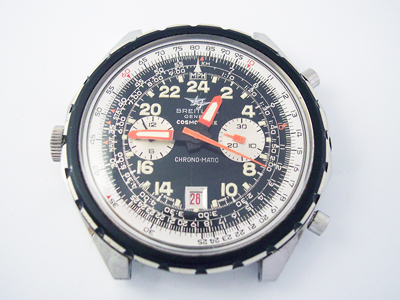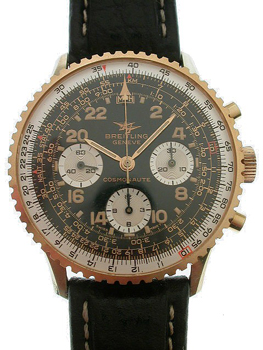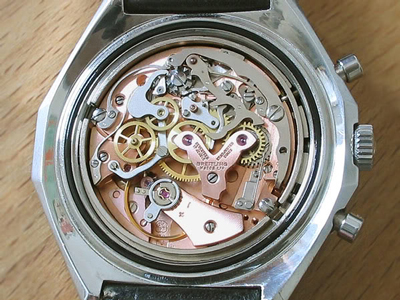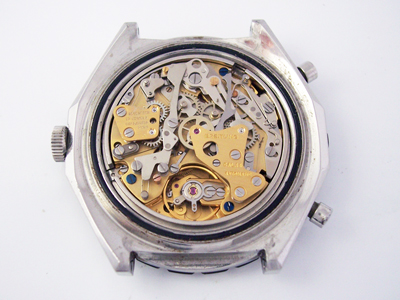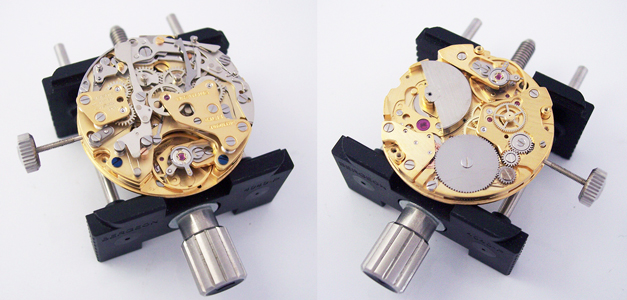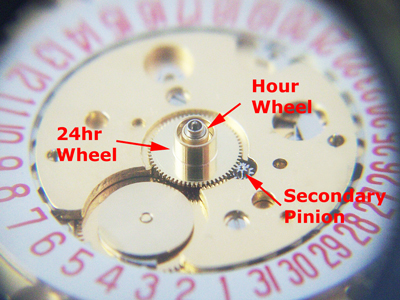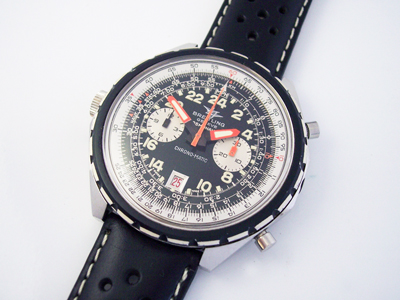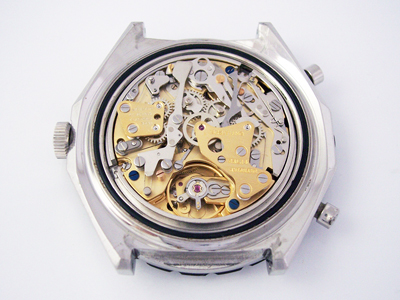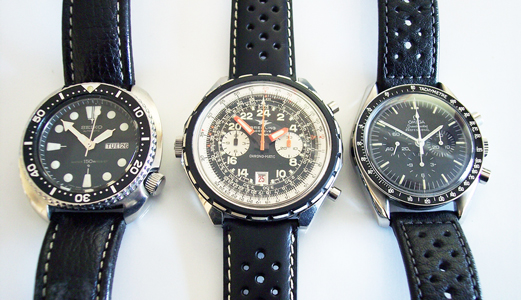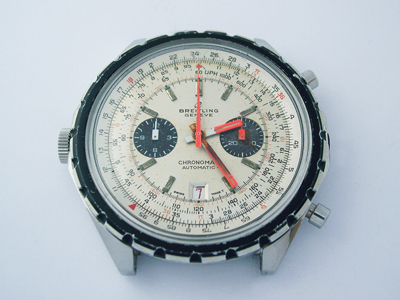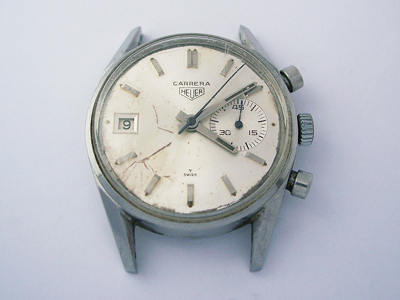There have been quite a few aviation watches on the blog, but we’re going even higher this time with a Breitling Cosmonaute Chrono-Matic.
(Click pictures to enlarge)
The Cosmonaute along with the Navitimer, are stalwarts in Breitling’s model line-up. In 1958, NASA astronaut Lt Cmdr Scott Carpenter contacted Breitling to suggest that they make a 24 hour version of their already popular (regular 12 hour) Navitimer chronograph. In 1961 Breitling did just that and registered the name “Cosmonaute” with the Swiss Office of Intellectual Property later in the same year.
Breitling also supplied Lt Cmdr Carpenter with his own Cosmonaute in 1962 for use in NASA’s Mercury program and he wore the watch during the Mercury 7 mission in May of that year, orbiting the earth 3 times during a 5 hour space flight. This short film shows details of the mission along with a re-issued model released in 2012 to celebrate the 50th anniversary.
However, the Mercury 7 mission was to be the Cosmonaute’s only trip into space as after being submerged in the Atlantic Ocean during the splash-down recovery, the watch failed. It was subsequently returned to Breitling by NASA for examination but was never returned, and its current whereabouts is unknown.
Despite this, the success of the mission cemented the Cosmonaute’s place in the model range and the achievement was used in Breitling’s promotional activities throughout the 1960’s. More models were to follow in stainless steel, gold capped and 18kt gold cases, most powered by the tried and trusted Venus cal. 178.
By 1968 a new version of the Cosmonaute was in the pipeline, this time in a more robust case. It was to be produced in both automatic and manual versions; the automatic featuring the new to market Breitling cal. 14 (developed in association with Heuer, Buren and Dubois Dépraz) and the manual continuing with the Venus cal. 178 as before.
The sharp-eyed may have noticed that the crown is on the left hand side of the case for the automatic, and on the right hand side for the manual. To avoid having to manufacture two different cases, the cases were all drilled on both sides and a black plastic plug inserted into either one side of the case or the other (you can just see the plug on the right hand side of the case in the picture below).
The watch in this post arrived in non-running condition and the chronograph wouldn’t start, stop or reset – not the best of starts. However, on opening the watch things were more encouraging…
The reason that the chronograph wasn’t working was down to one of the case clamps having fallen out, the watch was sitting too deep in the case, and so the pushers were no longer in line with the operating levers.
Inspecting the condition of the oils under the microscope it was obvious that the watch hadn’t been serviced for many years. However, when applying a little pressure to the wheel train the watch would tick weakly which was a good sign that there were no major problems ie. broken pivots.
Sure enough, after a full service the movement started right up and all functions operated as expected. I even found the missing clamp and securing screw rattling around inside the movement which was an added bonus.
Regular readers will undoubtedly have seen this before but the automatic winding mechanism on this calibre is ‘hidden’ in the centre of the calibre under the chronograph module. Here is a picture of the movement with and without the module in place, as you can see it’s in great shape after a full service.
(Click picture to enlarge)
One interesting technical detail of this calibre is the way that the 24 hr hand is implemented. A secondary pinion is mounted on top of the normal minute wheel, geared to rotate the 24hr wheel once per day.
In watches with a both an hour hand and a 24hr hand, like this Seiko Navigator Timer, the 24hr wheel has less height than the hour wheel to allow both hands to be mounted. In the Cosmonaute, as there is no regular hour hand, the 24hr wheel is the same height as the hour wheel – the hour wheel only drives the calendar in this watch.
With the movement serviced, the case cleaned and the crystal polished, the watch was ready for re-assembly.
Finally, what isn’t clear from the pictures is the size of this watch. With a case diameter of 47mm and a huge crystal, it makes these two WIS favourites look like ladies watches. Well, not quite but you get the idea… it’s a bruiser alright!
Rich.
** Many thanks to Dominic McAleenan for letting me feature his watch on the blog. **

